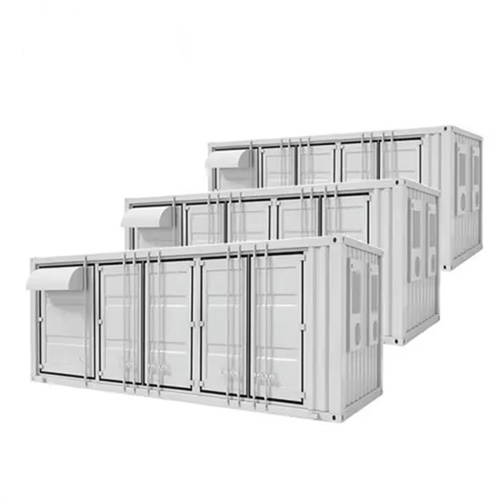About Latest photovoltaic panel leveling specifications
The Federal Energy Management Program (FEMP) provides this tool to federal agencies seeking to procure solar photovoltaic (PV) systems with a customizable set of technical specifications. Select the plus sign in the rows below for more information about each specification.
The Federal Energy Management Program (FEMP) provides this tool to federal agencies seeking to procure solar photovoltaic (PV) systems with a customizable set of technical specifications. Select the plus sign in the rows below for more information about each specification.
the National Electrical Code, and Underwriters Laboratories product safety standards [such as UL 1703 (PV modules) and UL 1741 (Inverters)], which are design requirements and testing specifications for PV-related equipment safety (see Equipment Standards below).5.
Specification. Specifications for Solar Street Lights and Solar Study Lamps – specifying minimum performance parameters for batteries (581 KB, PDF) Updated Specification and Testing procedure for the Solar Photovoltaic (SPV) Water Pumping System and Universal Solar Pump Controller (USPC)(22/03/2023, 2.5MB, PDF).
Find out how the ASCE 7 standard affects wind load, seismic load, and tornado load considerations for solar photovoltaic (PV) systems.
the mounted aluminum framed PV panels (i.e., other PV technologies or ground mount systems), EPA recommends that an installer certified by the North American Board of Certified Energy Practitioners (NABCEP) determine the ideal system for the project’s unique building environment.
As the photovoltaic (PV) industry continues to evolve, advancements in Latest photovoltaic panel leveling specifications have become critical to optimizing the utilization of renewable energy sources. From innovative battery technologies to intelligent energy management systems, these solutions are transforming the way we store and distribute solar-generated electricity.
When you're looking for the latest and most efficient Latest photovoltaic panel leveling specifications for your PV project, our website offers a comprehensive selection of cutting-edge products designed to meet your specific requirements. Whether you're a renewable energy developer, utility company, or commercial enterprise looking to reduce your carbon footprint, we have the solutions to help you harness the full potential of solar energy.
By interacting with our online customer service, you'll gain a deep understanding of the various Latest photovoltaic panel leveling specifications featured in our extensive catalog, such as high-efficiency storage batteries and intelligent energy management systems, and how they work together to provide a stable and reliable power supply for your PV projects.
6 FAQs about [Latest photovoltaic panel leveling specifications]
What are the parameters of photovoltaic panels (PVPS)?
Parameters of photovoltaic panels (PVPs) is necessary for modeling and analysis of solar power systems. The best and the median values of the main 16 parameters among 1300 PVPs were identified. The results obtained help to quickly and visually assess a given PVP (including a new one) in relation to the existing ones.
What determines the growth of photovoltaic panel (PvP) production?
The growth of the PVPP market determines the growth of photovoltaic panel (PVP) production. However, in each case, it is necessary to investigate the efficiency of PVPs and the overall performance of the systems in order to select the best PVPs for installation in a specific geographic location.
How much weight does a PV system add to a roof?
A conventional PV system that includes racking materials will add approximately 6 pounds per square foot of dead load to the roof or structure, though actual weights can vary for different types of systems. Wind will add live loads; the magnitude of live loads will depend on the geographic region and the final PV system.
What are the requirements for solar panels on a low-slope roof?
Ballasted, unattached PV systems on low-slope roofs have to meet seven conditions to comply with seismic load requirements in Section 13.6.12. For low-profile systems, the height of the center of mass of any panel above the roof surface must be less than half the least spacing in plan of the panel supports, but in no case greater than 3 feet.
How efficient are photovoltaic panels?
Due to the many advances in photovoltaic technology over recent years, the average panel conversion efficiency has increased from 15% to over 23%. This significant jump in efficiency resulted in the power rating of a standard-size panel increasing from 250W to over 450W.
Do photovoltaic panels need data analysis?
The lack of extensive data analysis on existing photovoltaic panels (PVPs) can lead to missed opportunities and benefits when optimizing photovoltaic power plant (PVPP) deployment solutions. The feasibility study of the PVPP requires accurate data on PVPs in order to fully unleash their potential.
Related Contents
- Latest technical specifications for photovoltaic panel brackets
- Latest photovoltaic panel insulation measurement specifications
- Latest photovoltaic panel folding design specifications
- Latest version of photovoltaic panel technical specifications
- Latest photovoltaic panel design specifications
- The latest photovoltaic panel power generation configuration specifications
- Latest specifications for photovoltaic panel bracket span
- Latest photovoltaic column panel installation specifications
- The latest photovoltaic panel wiring layout specifications
- Latest technical specifications for photovoltaic panel stripping
- Latest photovoltaic channel panel installation specifications
- Latest interpretation of photovoltaic panel naming rules


